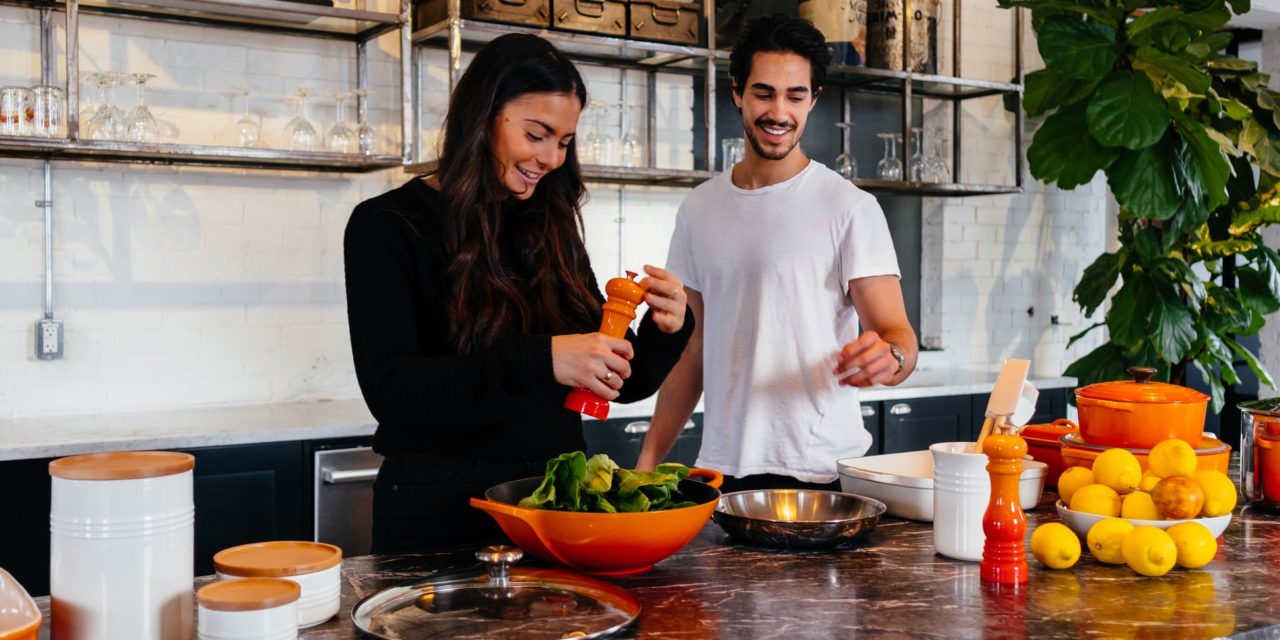Whether an experienced cook or just a novice, stainless steel cookware will make your life in the kitchen easy and more pleasurable. This type of cookware has become increasingly popular. Why? It is made up of a mixture of metals. It combines iron, nickel, chromium, and several other metals. Because stainless steel by itself is not a good conductor of heat, the additional metals offer the user the best of all worlds. The flat encapsulated bottoms normally have copper or aluminum components that allow for even distribution of heat. You never have to worry about hot spots and thus sticky messes!
Waterless Stainless Steel Cookware Advantages
The popularity of this cookware can be attributed to its advantages. They include:
- Healthier and Tastier Meals. If you use waterless stainless steel cookware, cooking and eating will be a pleasure. Not only will you be cooking healthier because you are using less fats and oils in the food preparation process, but going waterless means that your foods are cooked in their own juices. The result-enhanced flavor and texture with minimal loss of vitamins and minerals. Foods cooked without oils and fats reduce calories and cholesterol.
- Durable and tough Metal. With proper care, it should last for a lifetime. It is not prone to chipping, rusting, or even staining. It won't dent or scratch easily. You don't have to worry about particles from the pan getting into your food. While this cookware is made up of steel and other metal alloys, it is only stainless steel that is on the outer portion of your cookware. Therefore, you will never taste any of the metal alloys in the food that you cook. The non-stick protective coating prevents that from happening.
- Hard and non-porous metal. This makes it crack proof and leak proof. Because of its surface, it is typically found in hospital environments because it one of the most sterile surfaces. The 304 surgical stainless steel prevents the growth of bacteria because it is corrosion resistant, temperature resistant and is not easily scratched or warped. With proper care, your cookware will remain looking like new for quite some of time.
- Easy Maintenance. Proper maintenance is not time-consuming; yet, it can insure that your cookware will look like new 10 to 20 years from now. This cookware contains nickel, an alloy that helps it maintain that polished new look.
- Multi-ply stainless steel cookware disperses heat evenly. Stainless steel is not a good conductor of heat. However, the aluminum added to the bottom improves this heat transfer process. This ensures that heat is distributed throughout the pan and food is cooked evenly and quickly. The ease of use and the reduced cooking time allow you to spend more time on other pleasurable pursuits.
- Safe cookware to use. Unlike Teflon, particles from the pot or pan will never chip off and enter into your foods. You do not have to worry about metal poisoning. However, there is one exception. If you are allergic to nickel, you should avoid using stainless steel cookware.
There seems to be a lot of debate regarding what it means to “cook waterless.” Does it mean using no water at all? Some would argue that waterless cooking means “no water” at all. However, the more popular view is that some water should be added. How much really depends on the type and amount of food that you are preparing. Dry foods, like beans, rice, and pastas, require water. With other foods, the general rule of thumb is to add 1 ounce of water per quart of cookware. However, this is only a guideline. Once you gain experience with waterless cookware and your stove, you can alter this to your own personal taste.
We hope you found this information helpful. If you decide that you would like to investigate stainless steel cookware further, visit our site – The Gourmet's Cookware. Not only do we provide additional information about waterless cooking, we have also included some great waterless cooking recipes.


